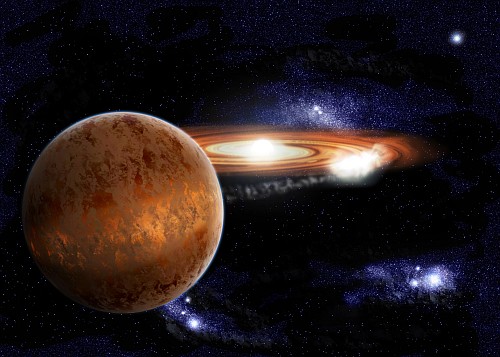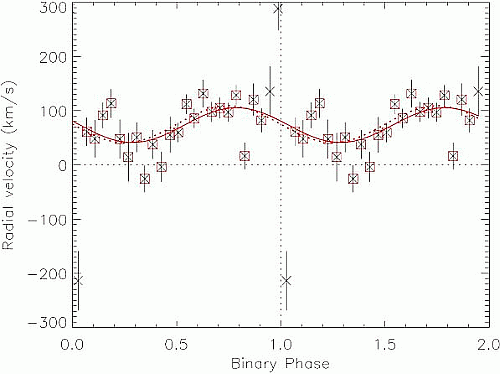Astronomers at the Isaac Newton Group of Telescopes (ING) have recently used, for the first ever time, an electron-multiplying
detector for astronomical spectroscopic observations, allowing a high-time resolution analysis of the orbital motion of a short orbital period cataclysmic variable.
These observations would have been much more time consuming, if
not impractical, with a conventional CCD and demonstrates the tremendous potential of the electron-multiplying camera technology.
The ING now offers three electron-multiplying CCD cameras as part of its detector suite.
The first of these, based on a small format CCD60 sensor, has been in use for several years as
a wavefront sensor in the GLAS adaptive optics system. More
recently two more larger format 1k×1k pixel cameras, named
QUCAM2 and QUCAM3, have been commissioned. These both contain a
CCD201-20 sensor which is of frame transfer design and allows
efficient high speed spectroscopy on ISIS spectrograph.
QUCAM2 and QUCAM3 are
optimised for extremely low noise and are easily capable of
resolving single photons. They are particularly suited for
observations that have been traditionally limited by detector
read-noise, one particularly good example being high-time
resolution, high-dispersion spectroscopy.
The astronomers used the QUCAM2 camera in combination with the ISIS spectrograph on the William Herschel Telescope to carry out a
radial-velocity study of the faint (g´=18.5) cataclysmic variable SDSSJ143317.78+101123.3, hereafter SDSS J1433. This system consists of a white-dwarf star accreting
material from a lower mass secondary, suspected of being a brown dwarf. The orbital period of this system is only 78 minutes
and hence the need for high-time resolution in the measurements. Further, the velocity amplitude of the
white dwarf orbital motion in such an extreme mass-ratio binary is
expected to be as small as a few tens of km/s. Therefore, the use of the
highest spectral resolution of ISIS is also essential.
 |
Artist impression of the SDSS J1433 binary system. Credit: Stuart Littlefair (Sheffield University). [ JPEG ].
|
SDSS J1433 is particularly
interesting since its orbital inclination is high enough to
produce an eclipse of the white dwarf, and the accretion disc
that surrounds it, by the larger diameter secondary. Although
physically larger, the secondary has only a small fraction of
the mass of the highly-dense primary.
 |
Radial velocity variation as measured from the changes in the wavelength of the extreme wings of the Hα emission line throughout the orbital period of the binary SDSS J1433. [ JPEG ].
|
The astronomers inferred the orbital velocity of the
white dwarf around the common center of gravity, from the small changes throughout the orbital period in the Hα
emission line produced in the inner regions. This was found to be 34±4 km/s indicating a large ratio in
the masses of the two stars. This result supports an earlier
conclusion that the secondary in fact has a mass below the
hydrogen burning limit of 0.08 solar masses and is therefore a
degenerate brown-dwarf star.
More information:



